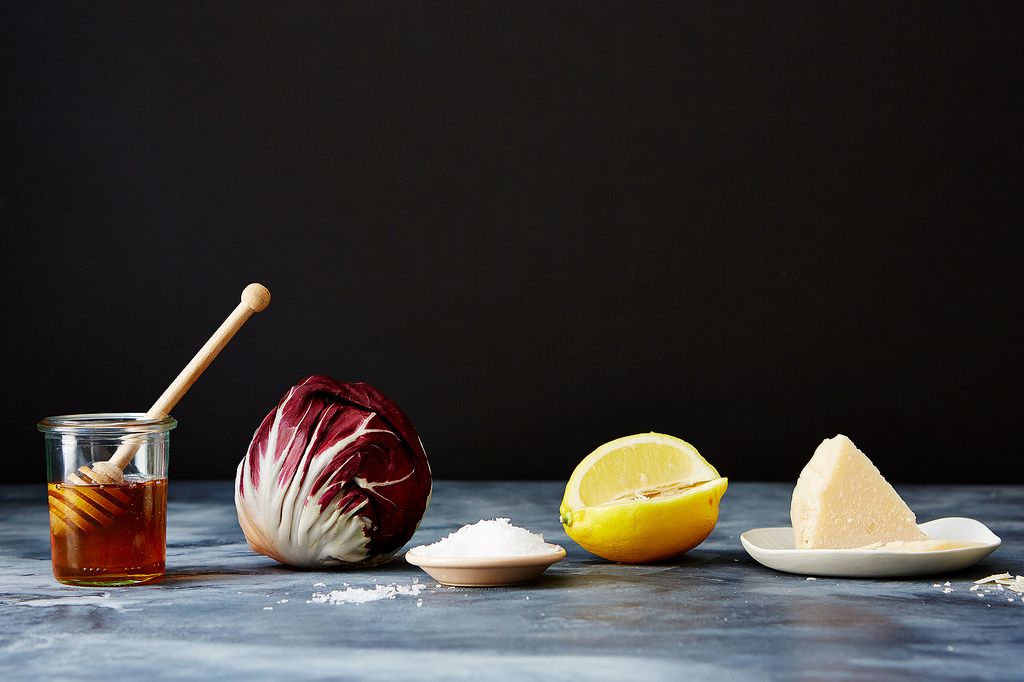Inspired by conversations on the Food52 Hotline, we're sharing tips and tricks that make navigating all of our kitchens easier and more fun.
Today: It turns out, everything you need to know about balancing flavors is on the tip of your tongue.

Your taste buds know more than you think they do: They are capable of helping build a recipe from scratch or fixing one that's gone awry. There are five "tastes" that serve as the foundation for the flavors in every recipe: sweet, bitter, salty, sour, and umami. You may find that some tastes are more prevalent in certain dishes than others, or that only one or two dominate in a certain food or dish. But making delicious food is all about balancing these tastes, and once you are comfortable doing so, you'll have more confidence cooking without a recipe or curating a killer cheese plate. The next time you're faced with a dinnertime dilemna, know that all you really need to build a fantastic recipe is on the tip of your tongue when you know how to use your taste buds.

Salty
Adding a few flakes of salt to a recipe isn't just about adding saltiness; it's a flavor enhancer, so when you “salt to taste,” it also coaxes out low-lying aromas and flavors. It can also balance unwanted bitterness in a dish.
- Dishes where this taste is prominent are: Pickled Corn and Beans; Toast with Squash, Prosciutto, and an Egg; and Lamb, Arugula, and Feta Taco.
-
But what should you do if you add too much salt? In some cases, the solution may be as simple as adding more water to dilute the saltiness. Alternatively, sweetness helps to counteract saltiness, so a few pinches of sugar, a bit of honey, or a dash of balsamic vinegar can go a long way.
- If a dish is too bitter or too bland and there are subtle flavors you'd like to highlight, the age-old advice of "salt to taste" is a good rule of thumb to follow.
-
You don't have to use only salt to get that salty taste: Use soy sauce, cured meats, olives, or cheese instead.

Bitter
Although we all have different tolerances, people tend to be sensitive to bitterness. Interestingly enough, evolution-wise, we are hard-wired to be suspicious of bitter foods, as the taste could indicate that a plant is inedible. Turns out many bitter foods are also good for us. Even more interesting: Bitterness in food and drink is gaining popularity, so perhaps bitter really is better.

Sweet
Like salt, sweet flavors are good at giving a savory dish more depth. And why do we love the combination of sweet and salty so much? The sweet and salty tastes both signal an intake of calories to our brains, which means a perceived double-dose of energy and nutrition.
- Recipes with a prominently sweet flavor are Salted Pumpkin Caramels, Carrots with Honey, and Mini Black and White Cookies.
- If a dish is too sugary, sour ingredients -- like lemon juice and vinegar -- will do you well, as they will cut through and brighten the sweetness.
- Use sweet ingredients to take the edge off of dishes that are too bitter.
-
Other ingredients to use as an alternative to sugar are honey, fruit, and maple syrup.

Sour
This is another flavor that has a reputation for being hard to swallow -- but even the smallest addition of a sour ingredient, like a burst of lime, a splash of vinegar, or a swirl of crème fraîche, can brighten up a dish. People often confuse sourness and bitterness, but the key difference to keep in mind is that sour flavors depend on acidity to give it that mouth-puckering taste. Keep this in mind while you are cooking, as it is easy to mistake one for the other. Pro-tip: Taste as you go along for a well-balanced dish.

Umami
Umami is the new(est) kid on the block in the realm of tastemaking. It wasn’t recognized as a real flavor on this side of the Atlantic until 1985 (it was scientifically identified in 1908 by Kikunae Ikeda). Umami is the savory, earthy, meaty flavor that is naturally occurring and can be developed in others through slow cooking, aging, drying, and curing. Often confused with saltiness, umami is a taste category unto its own, contributing a depth and oomph to food that salt can't necessarily provide by itself.
Top and ice cream photo by Mark Weinberg; all others by James Ransom








See what other Food52 readers are saying.